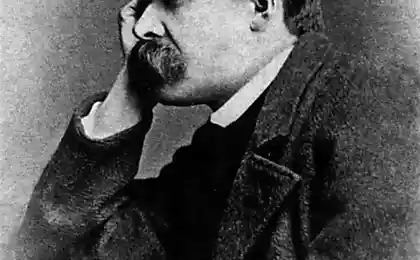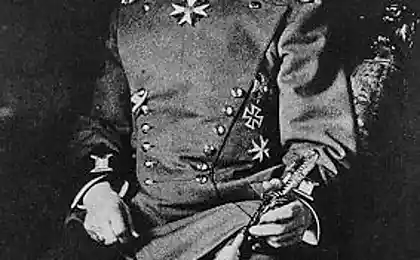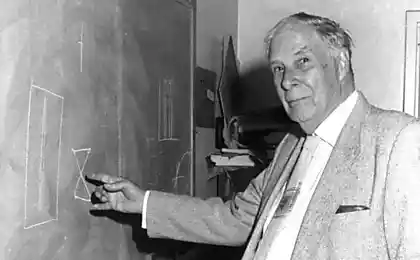428
How to make peace with yourself from the past when you have done many bad things

The severity of past mistakes can haunt us for years, creating an insurmountable barrier between who we were and who we aspire to be. Reconciling with yourself from the past is not just a psychological trick or a temporary relief of conscience. This is a fundamental process of internal transformation that allows you to redirect life energy from endless self-flagellation to creative movement forward.
As Carl Jung once said, “I am not what happened to me.” I am what I have decided to become.” This thought becomes the starting point in our exploration of ways to reconcile with our own past. Accepting one’s imperfections and recognizing the value of one’s experience are the first steps to inner freedom.
To come to terms with oneself is to break out of the past, taking away from one’s former self all the levers of control over the future. It is an act of consciously choosing a new identity based not on the denial of the past, but on its integration into a holistic identity.
Why do we get stuck in past mistakes?
The human mind has an amazing ability to cling to negative memories. According to research in cognitive psychology, negative experiences are processed more carefully by the brain than positive ones, an evolutionary mechanism that helped our ancestors avoid danger. However, in the modern world, this feature often turns into a serious obstacle to psychological well-being.
There are several fundamental reasons why we can’t let go of past misconduct for so long:
- The illusion of immutability of personality. We unconsciously think of ourselves as the same people we did 5, 10, 20 years ago, even though science says otherwise — our cells, neural connections, and even traits are constantly changing.
- The phenomenon of moral accounting. The human psyche tends to carefully consider wrongdoing while underestimating positive actions and change.
- Social programming. Many cultural and religious traditions reinforce the idea of long-term redemption and guilt.
- Cognitive distortion. A tendency to overestimate the severity of one’s misdeeds and underestimate one’s ability to change.

The Psychological Anatomy of Self-Forgiveness
Reconciling with yourself from the past is not a one-time event, but a complex multi-stage process that affects different levels of the psyche. This process can be described as a psychological journey through several key stages:
1. Full recognition and awareness
Reconciliation does not begin with hasty oblivion or denial of past actions, but, on the contrary, with their deep awareness. Authentic confrontation with the past implies an honest acknowledgement of all aspects of the actions performed without self-justification, but also without excessive dramatization.
Practical Exercise: A Letter of Facts
Take a piece of paper and describe an event or action that disturbs you, based solely on facts, without emotional evaluations or interpretations. Try to look at the situation through the eyes of an impartial observer. This will help to separate real events from their emotional perception.
2. Understanding the context and motives
Every action takes place in a specific context. What seems like an unforgivable mistake today may have been the only solution available or a natural reaction in a past situation. Understanding the circumstances of the “former you” allows you to see a fuller picture of what happened.
It is important to understand that explaining the reasons for your past actions is not the same as justifying them. The explanation seeks to understand causality, while the justification seeks to absolve responsibility.
3. Learning and transforming experiences
Friedrich Nietzsche said, “What does not kill us makes us stronger.” Contemporary positive psychology extends this idea by introducing the concept of post-traumatic growth, a phenomenon in which a person not only returns to his former state after difficulties, but reaches a new, higher level of development.
The key to coming to terms with the past is the ability to transform painful experiences into valuable life lessons. Every “bad act” contains the seeds of understanding that, when properly understood, can become the basis for profound personal change.
Practical strategies for reconciling with yourself from the past
The theory of self-forgiveness becomes effective only when it is embodied in concrete actions and practices. Consider the scientifically based and proven methods that will help begin and strengthen the process of reconciliation with the past self.
“Conversation with your past self”
This technique is based on the methods of Gestalt therapy and involves establishing a symbolic dialogue with oneself from the past. Research shows that this approach helps to integrate rejected parts of the personality and reduce internal conflict.
How to practice:
- Choose a quiet place where no one will disturb you.
- Place two chairs opposite each other.
- When sitting in one chair, speak for your true self.
- When you move to another chair, answer on behalf of yourself from the past.
- Try to understand the motives and feelings of both sides.
- End the dialogue by finding common ground and expressing acceptance.
Method of cognitive restructuring
This method, developed as part of cognitive behavioral therapy, is aimed at identifying and changing destructive thought patterns. It is particularly effective when dealing with self-blame and excessive self-criticism.
Action algorithm:
- Identify automatic negative thoughts about your past ("I'm a terrible person," "I don't deserve happiness," etc.)
- Write down the evidence for and against each thought.
- Create a more balanced and realistic perception of the situation.
- Practice new cognitive patterns regularly.

The ritual of symbolic release
The power of symbolic action is recognized by many psychological schools, from Jungian analytical psychology to modern neuropsychology. Symbolic ritual can be a powerful tool for the emotional completion of past events.
Variants of symbolic rituals:
- Letter of forgiveness Write a letter to yourself from the past expressing understanding, compassion and forgiveness. Then you can symbolically destroy it (burn, tear) or save it as a reminder of the decision you made.
- Visualization meditation Imagine meeting yourself from the past in a safe place where you can talk and exchange forgiveness.
- Creating a Transformation Artifact Create an object (drawing, crafts, collage) symbolizing your journey from the past to the present, and place it prominently as a reminder of the transformation you have made.
“Forgiveness is not an event, but a process that requires time, energy and determination. But when we forgive, we regain the peace and strength that we once gave to anger and regret. - Robin Sharma.
Overcoming Psychological Barriers to Self-Forgiveness
The path to reconciliation is rarely straight and smooth. Along the way, we are faced with various psychological traps and barriers that are important to recognize and overcome in a timely manner.
Fear of repeating past mistakes
One of the most common barriers is the fear that forgiving yourself will lead to a repeat of previous behaviors. Paradoxically, research suggests the opposite: Unresolved feelings of guilt and shame are more likely to provoke regressive behavior, while genuine self-reconciliation strengthens self-control and responsibility.
Reconciling with yourself from the past does not mean accepting your past actions. It means recognizing one’s ability to change and grow beyond previous constraints.
Identification with past misconduct
Often we identify so strongly with our past mistakes that they become an integral part of our identity. This identification ("I am a person who betrayed a friend" instead of "I am a person who once committed a betrayal") becomes a serious obstacle to inner liberation.
To overcome this barrier, it is useful to turn to the concept of narrative psychology, which views personality as an ever-evolving story. By changing the way we talk about ourselves and our past, we can form a new, more harmonious identity that integrates both positive and negative experiences.
Cultural and religious barriers
In some cultural and religious traditions, guilt and redemption play a central role, which can make the process of self-forgiveness more difficult. It is important to find a balance between respect for one’s cultural roots and psychological well-being.
Many spiritual practices, when understood in depth, contain self-reconciliation mechanisms. For example, in the Christian tradition there is the sacrament of confession and absolution, in Buddhism there is the practice of compassion and acceptance, in Judaism there is the concept of tshuva (return to the true self).
Integrating past experiences into a new identity
The ultimate goal of coming to terms with oneself from the past is not to forget or deny past mistakes, but to integrate them into a more mature and whole person. This integration takes place at several levels:
1. Creating a new narrative
Narrative therapy psychologists argue that our identity is largely shaped by the stories we tell about ourselves. Rethinking your past as a story of growth and transformation, rather than a chronicle of failure, allows you to integrate even the most painful experiences into a constructive life story.
Exercise "Rewriting History":
- Write down the story of a guilty or ashamed event in the third person.
- Explore the context, motives, and limitations of the protagonist (you are in the past).
- Add perspective – what happened before and after this event?
- Incorporate elements of learning and growth - how did this event change the hero?
- Complete the story by showing how the experience transformed the hero’s life for the better.
2. Developing awareness and presence
Mindfulness practices help strengthen the connection to the present moment by weakening the power of past memories. Regular meditation and other mindfulness practices create a psychological space in which past mistakes are perceived as completed events rather than as an ever-present reality.
3. Transforming Experience into Service
One of the most powerful ways to integrate negative experiences is to transform them into helping others. Studies show that people who have experienced difficult situations and made mistakes often become the most effective helpers for those who face similar problems.
Whether it’s informal support for loved ones, volunteering, or professional activities aimed at helping others, using one’s experience to prevent the suffering of others gives new meaning to the experience and helps one finally come to terms with the past.
From Self-Forgiveness to Self-Transformation
Reconciling with yourself from the past is not just a psychological technique, but a fundamental act of self-transformation. Letting go of past mistakes not only gives us emotional relief, but also releases an enormous amount of psychic energy that was previously blocked in endless cycles of self-blame.
This process is not fast and not always linear - there may be periods of progress and temporary returns to old patterns. However, consistent movement along the path of self-forgiveness inevitably leads to profound positive changes in self-perception and quality of life.
As Victor Frankl once said, “There is space between stimulus and response.” In this space, it is our power to choose our response. Our response is our growth and our freedom.” Reconciling with ourselves from the past expands this space of freedom, allowing us to act out of conscious choices rather than from the captivity of past traumas and mistakes.
Glossary
Authentic confrontation is the process of honestly and fully acknowledging all aspects of past actions without self-justification or excessive self-blame.
Gestalt therapy is a direction in psychotherapy that focuses on the awareness of the present moment and the integration of the rejected parts of the self to achieve the integrity of the individual.
Cognitive psychology is the field of psychology that studies the cognitive processes of human consciousness, including perception, thinking, memory and attention.
Cognitive behavioral therapy is a psychotherapeutic approach aimed at changing destructive patterns of thinking and behavior through their awareness and replacement with more adaptive ones.
Mindfulness is the practice of focusing attention on the current moment without value judgment, helping to reduce anxiety and increase awareness.
Narrative psychology is a direction in psychology that views a person’s personality through the prism of the stories he tells about himself and his life.
Narrative therapy is a form of psychotherapy that uses rethinking and reformulating life stories to change self-perceptions and solve psychological problems.
Positive psychology is the study of the conditions and processes that contribute to the optimal functioning of people, groups and institutions.
Post-traumatic growth is positive psychological changes that occur after overcoming difficult life circumstances or traumatic events.
6 character traits that indicate that you are a self-sufficient person
Leave alone or achieve: what to do if there is no reciprocity from a girl























